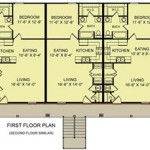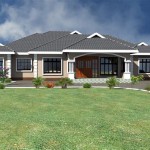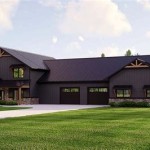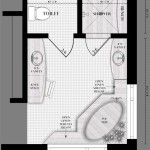2-Car Garage House Plans: A Comprehensive Guide
For many prospective homeowners, a two-car garage is a non-negotiable feature. It offers protected parking for two vehicles, additional storage space, and often, the potential for a workshop or hobby area. The variety of 2-car garage house plans available caters to diverse needs and preferences, encompassing various architectural styles, sizes, and layouts.
Understanding the key considerations when choosing a 2-car garage house plan is crucial for a successful building project. Factors such as lot size, budget, local building codes, and desired living space influence the selection process. This guide will explore the essential aspects of 2-car garage house plans to help navigate these considerations.
Garage Placement and Configuration
Garage placement significantly impacts the overall aesthetic and functionality of a house. Common configurations include front-entry garages, side-entry garages, and detached garages. Front-entry garages, often seen in traditional and suburban homes, dominate the façade. Side-entry garages offer more design flexibility and can create a more balanced streetscape. Detached garages provide greater separation from the main living areas and can be positioned strategically to maximize yard space.
Within these placements, the garage itself can have different configurations. A tandem garage parks two cars in a single line, ideal for narrow lots. A side-by-side garage offers wider parking spaces and easier access to both vehicles. The choice depends on the lot dimensions and individual preferences.
Architectural Styles and Sizes
2-car garage house plans come in a wide array of architectural styles, from classic to contemporary. Ranch-style homes often feature attached 2-car garages accessible from the main living area. Two-story homes may incorporate the garage underneath or to the side, depending on the terrain and design. Craftsman-style homes frequently feature detached garages with detailed woodwork and gabled roofs.
Size is another critical consideration. A two-car garage can range from a compact space solely for parking to a larger area encompassing storage, a workshop, or even a bonus room above. The required size depends on the intended use and the size of the vehicles being parked. Larger SUVs and trucks necessitate more spacious garage dimensions.
Interior Layout and Features
The interior layout of a house with a 2-car garage should facilitate seamless transitions between the garage and the main living spaces. A direct entry from the garage into the house, often through a mudroom or laundry room, is a desirable feature. This allows for easy access when carrying groceries or unloading belongings, especially in inclement weather.
Storage solutions within the garage are essential for maintaining order and maximizing functionality. Wall-mounted shelving, overhead storage racks, and cabinets can help organize tools, sporting equipment, and seasonal items. Workbenches and dedicated workshop areas cater to those who enjoy DIY projects or require a designated space for hobbies.
Considering Lot Size and Building Codes
Before finalizing a 2-car garage house plan, careful consideration of the lot size and local building codes is essential. Setback requirements dictate the minimum distance the garage and the house must be from the property lines. These regulations vary by municipality and influence the placement and size of the garage.
Lot dimensions also impact the overall house design. Narrow lots may necessitate a tandem garage or a side-entry garage to maximize usable space. Larger lots offer greater flexibility in garage placement and size, allowing for detached garages or more expansive attached garages.
Budget and Cost Considerations
Building a 2-car garage adds to the overall construction cost of a house. The size, features, and materials used significantly impact the budget. A basic 2-car garage with minimal finishes will be less expensive than a larger garage with custom features like epoxy flooring or a finished bonus room above.
Exploring different construction materials can help manage costs. While concrete block construction is durable, it can be more expensive than wood framing. Opting for standard garage door sizes and styles can also reduce expenses compared to custom designs.
Energy Efficiency and Sustainability
Incorporating energy-efficient features in the garage can contribute to lower utility bills and a smaller environmental footprint. Insulating the garage walls and ceiling can minimize temperature fluctuations and reduce energy loss. Energy-efficient garage doors with proper sealing can further enhance insulation and prevent drafts.
Sustainable building practices can also be integrated into the garage design. Using recycled materials, choosing locally sourced lumber, and incorporating solar panels on the garage roof are environmentally conscious options.
Accessibility and Future-Proofing
Considering future needs and potential accessibility requirements is important when planning a 2-car garage. Wider doorways and hallways can accommodate wheelchairs or mobility aids. A level entry from the garage into the house eliminates steps and improves accessibility for all occupants.
Future-proofing the garage involves anticipating potential changes in needs. Pre-wiring for electric vehicle charging stations or incorporating additional electrical outlets caters to evolving technology and lifestyle changes.

Contemporary 3 Bedroom House Plan With 2 Car Garage 80917pm Architectural Designs Plans

House Plan With 2 Car Garage

Modern 3 Bed House Plan With 2 Car Garage 80913pm Architectural Designs Plans

House Plan With 2 Car Garage

Ranch Style With 3 Bed 2 Bath Car Garage House Plans Small

Traditional Style With 2 Bed Bath Car Garage Bedroom House Plans Dream

12 Simple 2 Bedroom House Plans With Garages Houseplans Blog Com

Pin On Floor Plans

House Plan 67319 Quality Plans From Ahmann Design

12 Simple 2 Bedroom House Plans With Garages Houseplans Blog Com








